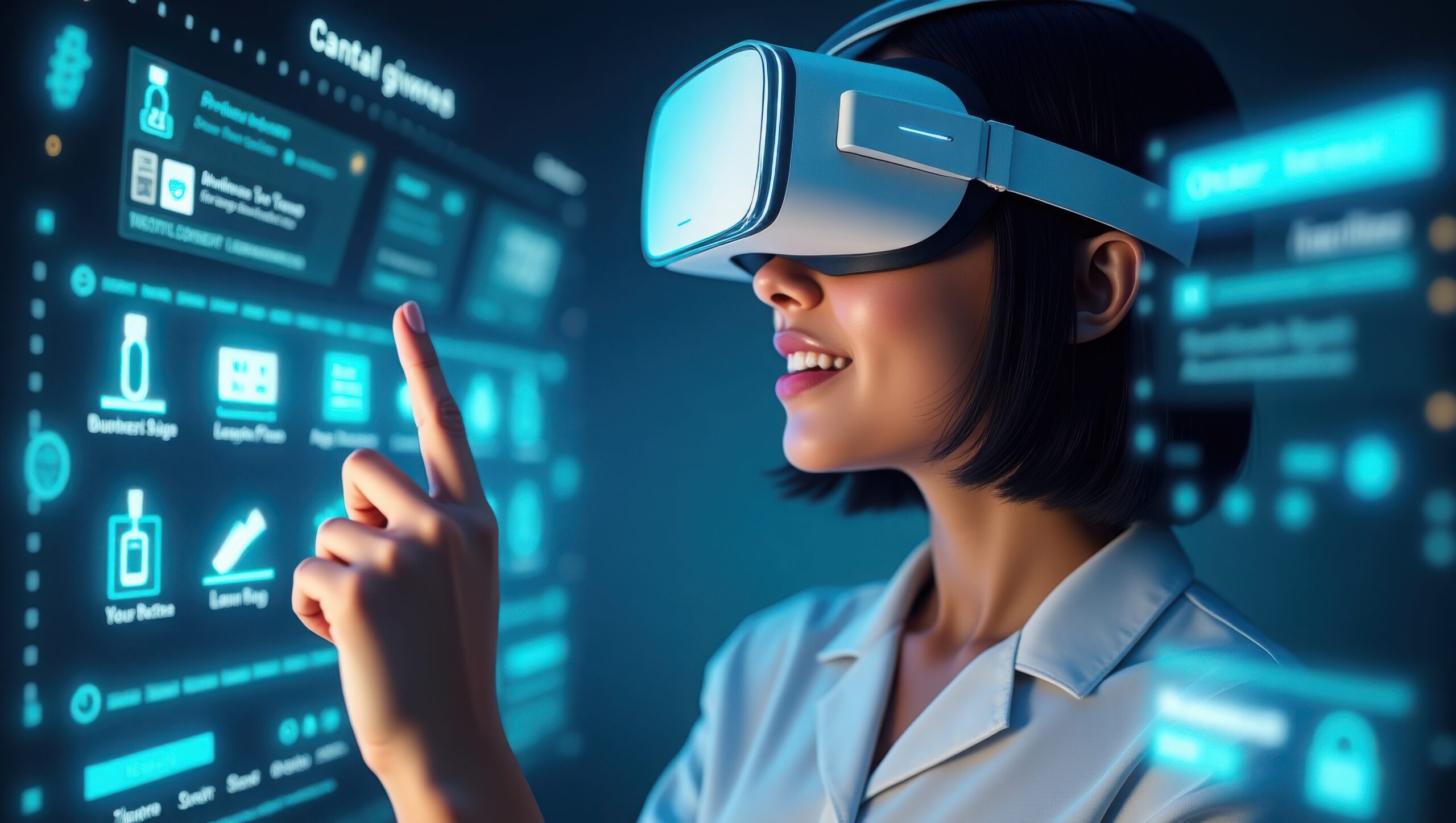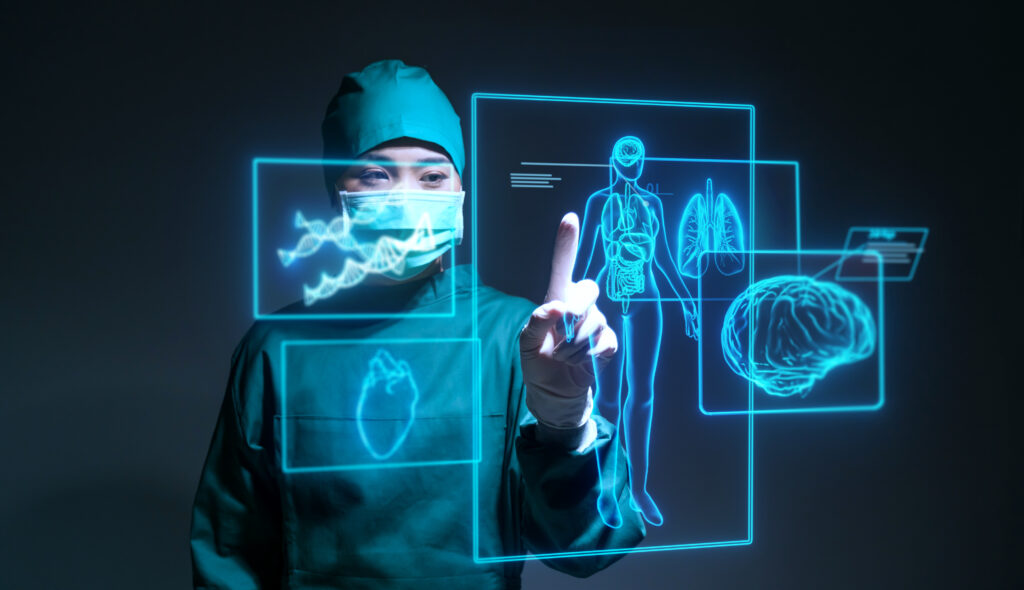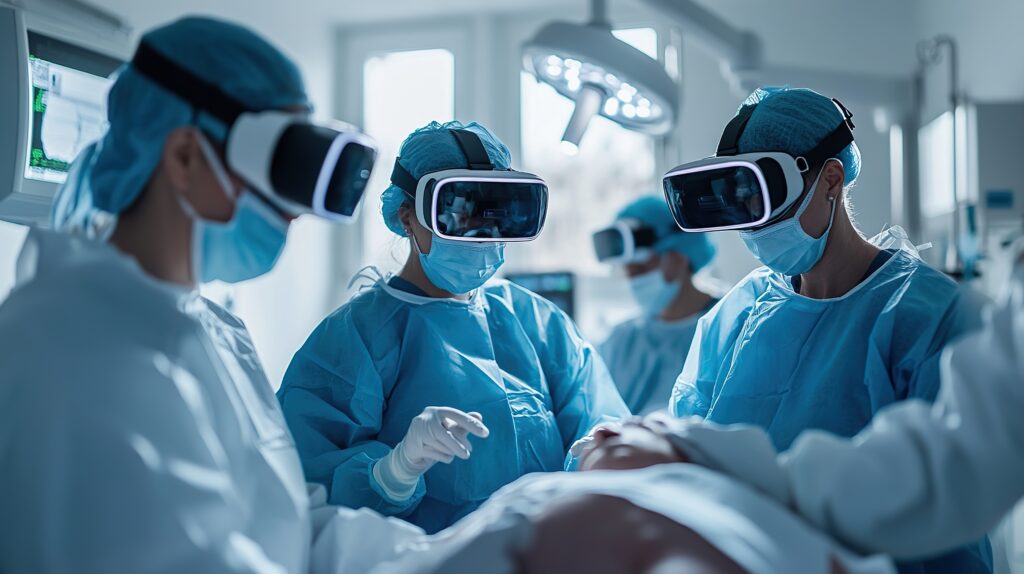AR VR in Healthcare Staffing: Transforming Training, Recruitment, and Patient Care

The rise of AR VR in healthcare staffing is revolutionizing how hospitals, clinics, and medical recruitment companies address one of the industry’s most pressing challenges: workforce shortages. From physician recruiters looking for innovative ways to onboard talent, to nurses seeking more flexible training options, augmented reality (AR) and virtual reality (VR) are reshaping what it means to recruit, retain, and support healthcare professionals.
How AR and VR are Shaping Modern Healthcare
Augmented and virtual reality are no longer futuristic concepts—they’re practical tools with wide-ranging applications across healthcare. AR VR can address critical health-care industry challenges such as provider burnout, care access disparities, and care deserts, including in rural areas. Virtual reality medical training is being used to simulate complex surgeries, while augmented reality in nursing offers bedside support with AR-assisted diagnostics and patient monitoring.
Beyond direct clinical care, AR and VR are being deployed in behavioral health for pain management, physical therapy, and mindfulness, giving clinicians new tools to improve patient outcomes while managing stress themselves.
The demand for tech solutions for the ongoing nursing shortage is particularly acute. AR and VR provide a scalable solution to reduce training bottlenecks and extend the reach of highly skilled professionals to underserved and rural areas.
Remote Clinical Education
One of the biggest benefits of AR VR adoption is its ability to speed up clinical training while lowering costs. Hospitals and universities are increasingly adopting healthcare simulation training tools that allow medical students and nurses to gain hands-on experience in safe, controlled environments.
Studies on VR training confirm its effectiveness in improving procedural skills and knowledge retention while also reducing training time. It’s been proven especially helpful in surgical education, improving speed, accuracy and confidence. For example, VR-based platforms like Osso VR and FundamentalVR provide hyper-realistic surgical simulations, reducing the time needed for in-person training and lowering the risk of medical errors. These tools also create opportunities for remote clinical education, allowing clinicians in rural or underserved healthcare areas to access the same quality training as those in urban centers.
For healthcare staffing, this means new hires can be onboarded faster, and existing staff can upskill more efficiently, all key advantages for a physician recruiter or medical recruitment company working under tight timelines.
AR VR for Healthcare Staff Well-Being
Beyond training, VR tools are proving valuable in supporting the mental health and resilience of healthcare workers. Stress, burnout, and compassion fatigue are top reasons for high turnover in hospitals and clinics. VR-based platforms such as BehaVR and XRHealth provide immersive stress reduction programs, mindfulness training, and even exposure therapy for clinicians dealing with anxiety or trauma.
In addition, AR VR platforms are emerging as vital tech solutions for nursing shortage challenges by creating healthier, more sustainable work environments. Nurses often cite emotional fatigue and lack of support as reasons for leaving the profession, but VR-guided resilience training and AR-assisted communication tools allow them to manage high-pressure environments more effectively. Some systems now offer virtual peer-support networks, enabling nurses to connect with colleagues in real time and share coping strategies during demanding shifts.
These innovations not only improve staff retention but also create a more supportive work environment—something medical recruitment companies can highlight when attracting top-tier talent. By integrating AR VR into well-being initiatives, healthcare employers can reduce turnover rates while enhancing the appeal of their workplace culture to new recruits.
AR-Assisted Diagnostics and Virtual Nursing Models
AR is also changing the day-to-day workflow of clinicians and improving patient care. AR-assisted diagnostics allow physicians to overlay patient imaging and real-time data during procedures, making rounds more efficient and reducing diagnostic errors.
Another major innovation is the rise of virtual nursing models. In this model, experienced nurses provide remote guidance to bedside staff via AR VR platforms, allowing hospitals to stretch limited nursing resources further. This “distributed staffing model” ensures that expertise is available even in rural or underserved healthcare areas, improving equity of care delivery.
These new models not only help address staffing shortages but also reduce burnout by distributing workloads more evenly.
Barriers to Adoption
Despite the promise, AR VR adoption faces hurdles. High upfront costs for hardware and software, integration issues with existing EHR systems, the need for appropriate implementation models remain major obstacles. Hospitals must also ensure cybersecurity measures are in place to protect sensitive patient data.
Yet, as technology costs decline and evidence of AR VR’s effectiveness grows, these barriers are expected to lessen. Medical recruitment companies can play a key role in bridging this gap by seeking candidates with digital skills and advocating for organizations that embrace innovation.
The Future of Tech-Enabled Staffing
Looking forward, AR VR is poised to enable smarter, tech-enabled staffing models that reduce turnover and geographic disparities. By empowering clinicians through remote clinical education, scalable simulations, and virtual collaboration tools, the healthcare system can better manage staffing challenges.
For physician recruiters and medical recruitment companies, AR VR adoption means a competitive edge—offering talent the chance to train faster, work smarter, and enjoy better support for their mental health and career development.
As the industry evolves, healthcare organizations that embrace AR VR will be best positioned to attract and retain top talent while improving patient outcomes.


